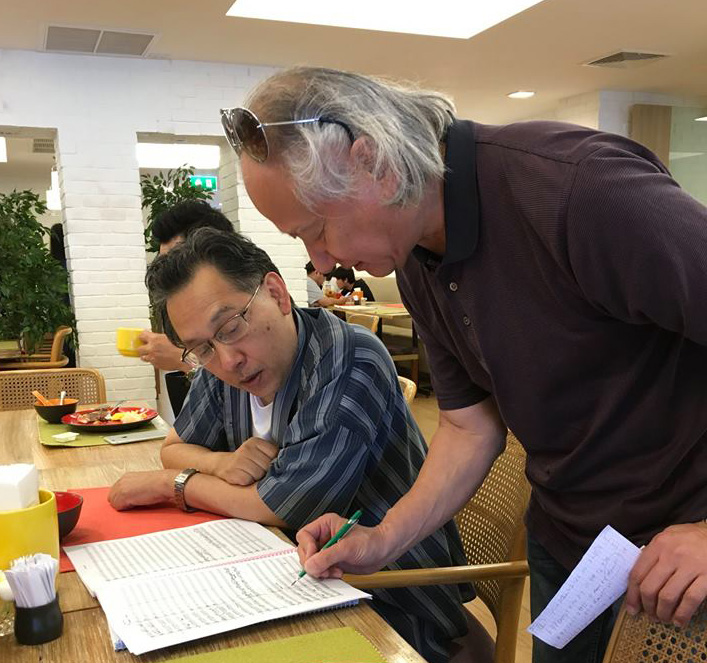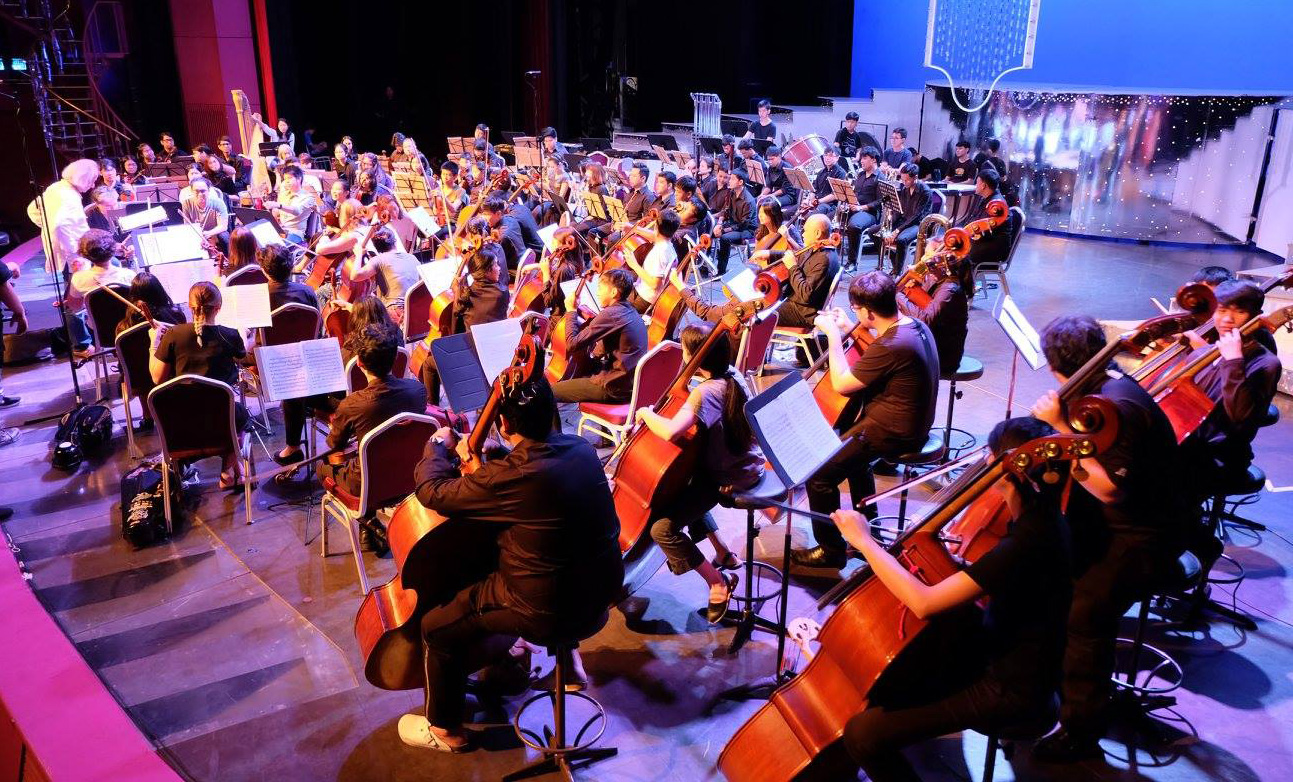Tiffany’s Show Theater was once again the venue for a concert given recently by the splendid Silpakorn Summer Music School Orchestra. Entitled Remembering a Great King, the concert included music by Brahms, Tchaikovsky and the Thai composer Narongrit Dhamabutra.

The Silpakorn Summer Music School is held annually with generous support from Siam Commercial Bank and the Siam Commercial Foundation. The course is directed by the distinguished Japanese conductor Hikotaro Yazaki who graduated as conductor at the Tokyo National University of Fine Arts and Music. He has conducted many orchestras worldwide including the Japan Philharmonic Orchestra, the Tokyo Youth Symphony Orchestra and three British orchestras: the Royal Philharmonic, the City of Birmingham Symphony Orchestra and the BBC Symphony Orchestra.
The enormous SSMS orchestra has over eighty young musicians and it opened the programme with a performance of the Tragic Overture by Johannes Brahms. He wrote only two concert overtures in his entire career, this one and the more well-known Academic Festival Overture. They both date from the summer of 1880 and this sombre work couldn’t be more different from its more light-hearted musical partner. Brahms told his friend and well-known publisher Fritz Simrock that he composed the work simply to satisfy the “melancholy side of his nature”. The SSMS orchestra, ably led by Leo Phillips gave a satisfying performance with rich and sonorous string tone, excellent articulation and a lively sense of rhythm. The performance was marked by some elegant woodwind playing and rich brass tone.
I was surprised to find that the printed programme contained no information about the music, although three pages were used to advertise some unrelated forthcoming performances in Bangkok. This struck me as a strange omission, especially as one of the works on the programme was relatively recent. It was a symphonic poem entitled Sinfonia Chakri by the distinguished Thai composer Narongrit Dhamabutra who received his Doctorate Degree in Music Composition from Michigan State University.

Dr. Narongrit already has several concerti and five symphonies to his credit and is currently working on the sixth. He composed Sinfonia Chakri to honour the Fiftieth Anniversary of the late King Bhumibol Adulyadej’s accession to the throne. It was first performed in 1996 by the Bangkok Symphony Orchestra and the following year by the Melbourne Symphony Orchestra. Narongrit’s compositions have been performed regularly by leading orchestras and ensembles in the United States, Europe, Asia and Australia.
Sinfonia Chakri is based on motives from selected compositions not only by King Bhumibol Adulyadej but also by King Rama VII (1893-1941) who was the seventh monarch of Siam of the House of Chakri. The work is in four continuous movements and makes use of brilliant and colourful orchestration. The festive and lively opening (Our Land) uses a motif from a song by King Bhumibol. The brass section was shown at their best with some excellent solos from both horn and trumpet.
In the second section (Chao Phraya) we hear a musical evocation of Royal Barges cruising on the Chao Phraya River. The movement contains especially effective writing for harp and percussion and the young musicians performed with an excellent sense of ensemble.
The third movement (Piphat) refers to the Thai classical music ensemble of the same name, symbolized by bustling string passages.
The final movement (Celebration) uses several motives from previous sections as well as the theme from King Bhumibol’s song Highest Dreams and brings the symphonic poem to a triumphant close. The Sinfonia is a delightful work with radiant kaleidoscopic harmonies and a wealth of melody. It also reveals the composers interest in blending Eastern and Western musical concepts. The orchestra gave a splendid performance of this most satisfying work.
The second half of the concert featured Tchaikovsky’s Sixth and last symphony which was first performed in 1893 and only nine days before the composer’s death. The original title in Russian was The Passionate Symphony but it was subsequently mistranslated into French as pathetique implying “evoking pity”, which is rather the wrong meaning. The symphony has always been partly shrouded by mystery, largely because Tchaikovsky claimed that it was programmatic, thus implying that it described something, yet refused to divulge what the “something” actually was. People have been guessing ever since.
The symphony has plenty of technical and musical challenges to keep the performers on their toes but as usual Mr Yazaki steered the orchestra through the difficult work with a firm and experienced hand.
The first movement showed the strings at their best, and included some fine woodwind solos. The brass sounded resplendent in the majestic coda. The second movement, the famous “waltz” with five beats in the bar was played with fine dynamic control and phrasing and showed the strings – and especially the cellos – to be on top form. The mercurial third movement with its curious jocular march had a lovely lightness of touch with some impressive brass playing. It’s been suggested that the finale, with its prolonged fade to complete silence at the very end, might be the “key” to the symphony. Interestingly, at the close of the previous movement Mr Yazaki launched into the finale without a break but even so, some musically-challenged member of the audience managed to deftly insert a few loud hand-claps in the several milliseconds available.




